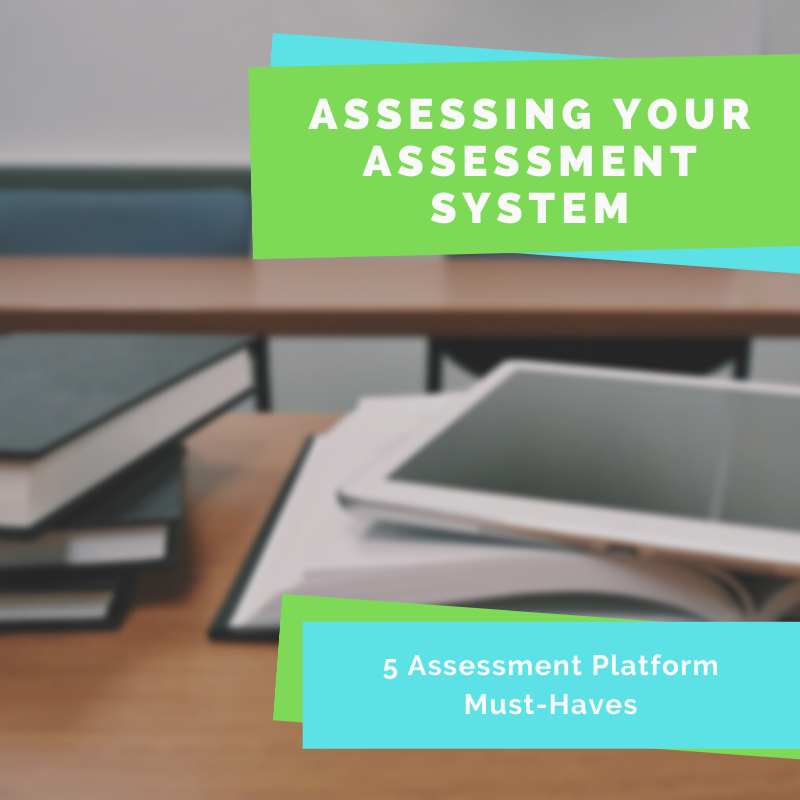 It’s the most wonderful time of the year! The calendar year is coming to a close, holiday music is making its way onto the radio, and Christmas decorations are taking over everywhere you go. While the rest of the world is preparing for a new year, educators and administrators are at their mid-year point, the time of year when they’re assessing their students’ and schools’ progress and performance, and possibly measuring it via mid-year assessments. While educators are focusing on evaluating their student’s progress, administrators are also evaluating the tools and systems provided to their teachers and students.
It’s the most wonderful time of the year! The calendar year is coming to a close, holiday music is making its way onto the radio, and Christmas decorations are taking over everywhere you go. While the rest of the world is preparing for a new year, educators and administrators are at their mid-year point, the time of year when they’re assessing their students’ and schools’ progress and performance, and possibly measuring it via mid-year assessments. While educators are focusing on evaluating their student’s progress, administrators are also evaluating the tools and systems provided to their teachers and students.
Curricular resources, software, computers and other technology are being evaluated as budgets for the coming school year are becoming top of mind. Assessment systems are one of the tools that are often evaluated this time of year. If your district is assessing its current assessment system or looking to implement one for the first time, this post will serve as a checklist for the five non-negotiables your new system should have. We at EdIncites believe that assessment systems should be affordable, reliable and easy-to-use, and are using those tenets to guide the conversation here. Let’s get started!
- Is it working for you?
First and foremost, it’s important to ask if your current system is working for you? Can your teachers and students easily navigate and use the system? Does it require excessive user training? Are the main users spending countless hours with Support or IT trying to make the system work? It may seem simple, but if valuable resources are being spent trying to force the system to work, it’s probably time to look at alternatives. And most importantly, can you trust that the system will be up and running when it’s test time. Whether your system’s last outage was 12 minutes or 12 days long, you need to be able to trust it will be working when test time comes. If the system you’re currently using is prone to system outages, experiences poor performance or requires significant downtime for maintenance, it’s definitely time to look at alternatives. - Can it handle all assessment types?
In order to see the full picture of student progress and success, assessment systems must be able to accommodate all types of student assessments. This includes formative, interim and summative assessments, online or paper-based. With the right platform, a district should be unrestricted by test type, purpose or frequency. Assessment platforms must have the tools necessary to meet accommodations requirements. They should also be able to support the gamut of assessments from pop quizzes a teacher decides to administer on spur-of-the-moment, to scheduled district-wide or state-mandated tests. Without this range of support, it is difficult for educators to see a full picture of student growth or proficiency. The platform should also be able to import assessment data from other sources to provide a comprehensive view of performance. - Do you know what to do with the data it generates?
All assessment platforms include base functionality that supports the creation and delivery of assessments. Most have some sort of statistics or reporting based on assessment performance, but few include true analytics that guide the instruction process and paint a picture of progress and proficiency through comparative and longitudinal data. Assessments are a powerful instructional tool, but only when the data they produce is meaningful. Reports must be easy-to-read and in an actionable format that empowers educators to confidently intervene when data indicates it. According to a recent article from Edutopia, “Streamlining data-collection processes and paying focused, immediate attention to what the data shows enables the teams to intervene quickly and address students’ needs in time.”* At EdIncites, we couldn’t agree more. Behind every number is a student and if that isn’t portrayed in your assessment platform’s reporting engine, it may be time to look at alternatives. - Do your users like the system?
Your teachers, who are the primary users of your assessment system, can probably offer a lot of good insight into how the system is working in the classroom. Students also need to be able to take assessments without frustration. Find out if this is the case. Ask your teachers if the assessment system you’re providing is easy-to-use and navigate. Is it enhancing their instruction or complicating it? Is your assessment provider listening to user feedback and making enhancements to the platform in a timely manner based on this feedback? - Can it be used for classroom management?
If your assessment system is simply a tool used to administer assessments, you’re missing out. Modern assessment platforms should have proctor monitoring tools built in that provide insight on the overall pace of the class, each student’s progress, length of time on each question, and have immediate access to assessment results. In appropriate contexts, like formative assessments, these features can become powerful classroom management tools that can help guide instruction.
How did your assessment system measure up? If you couldn’t unequivocally answer “yes” to every question here, let’s have a conversation. The Incite® Assessment & Reporting Platform is the powerful, intuitive platform trusted by the likes of Cobb County School District, Atlanta Public Schools, and other leading school districts, to create items and assessments, administer and score, and report on student assessments. Get in touch today to learn more about Incite and how you can transform your district’s assessment program.
*https://www.edutopia.org/article/using-data-quickly-devise-interventions



